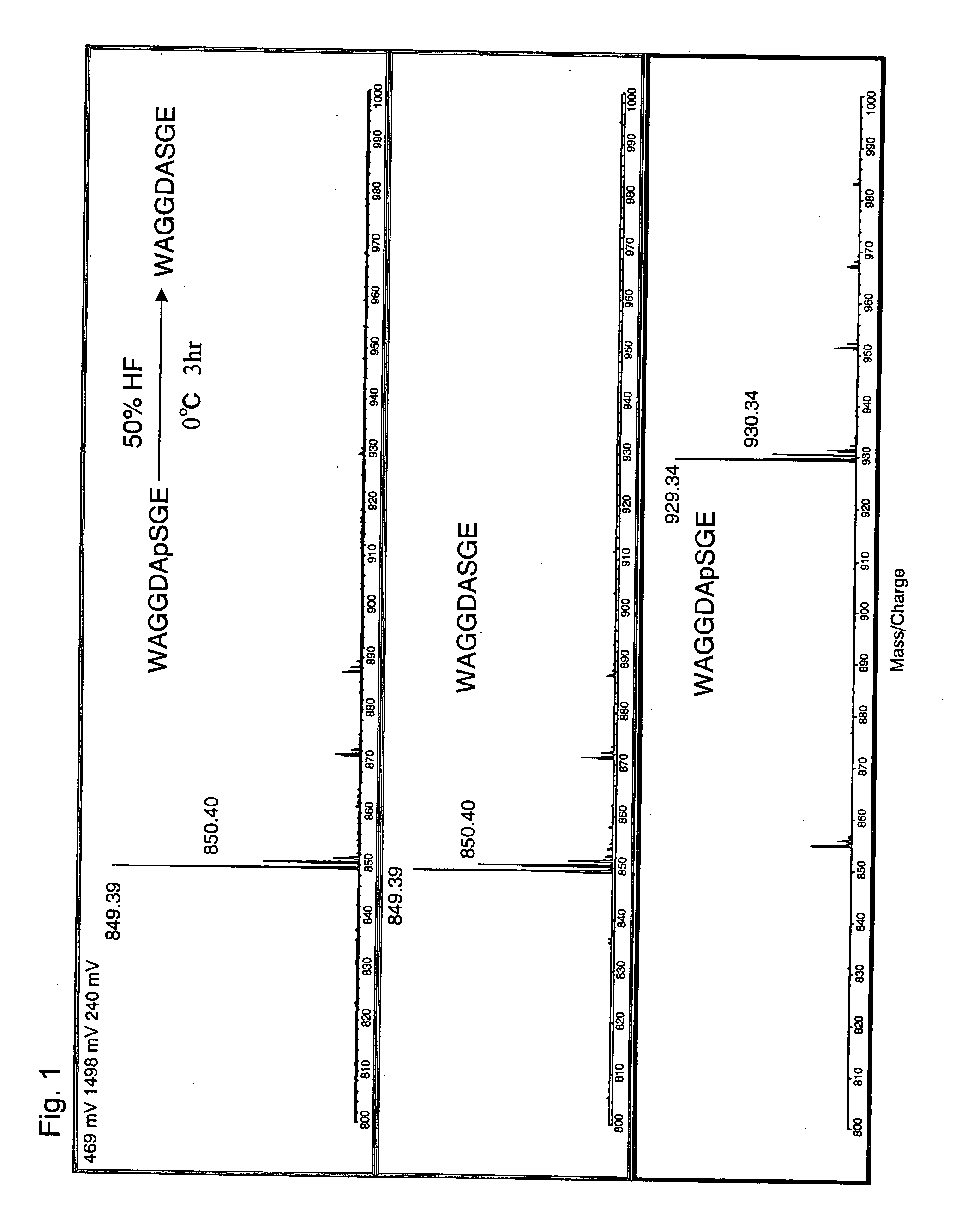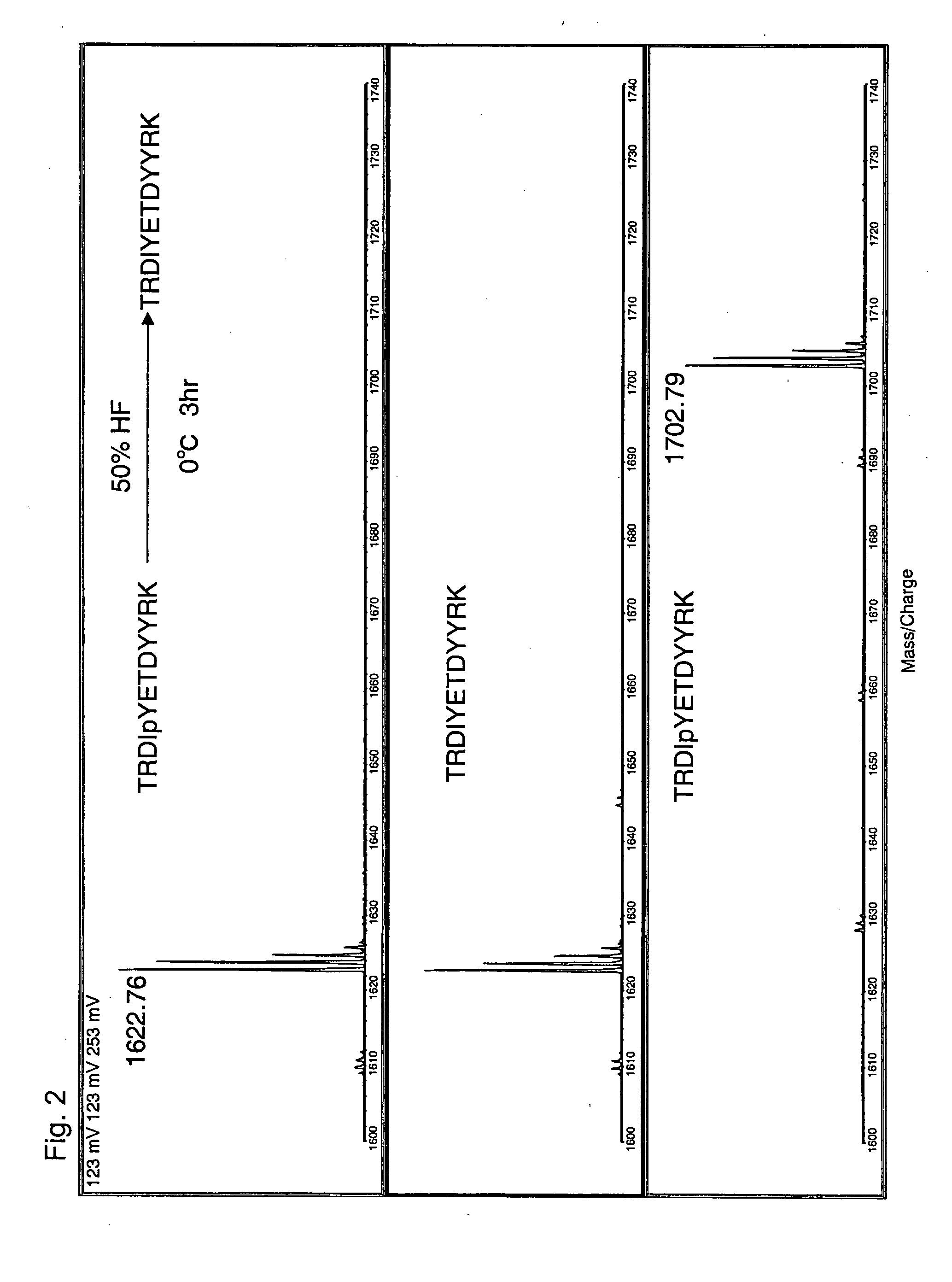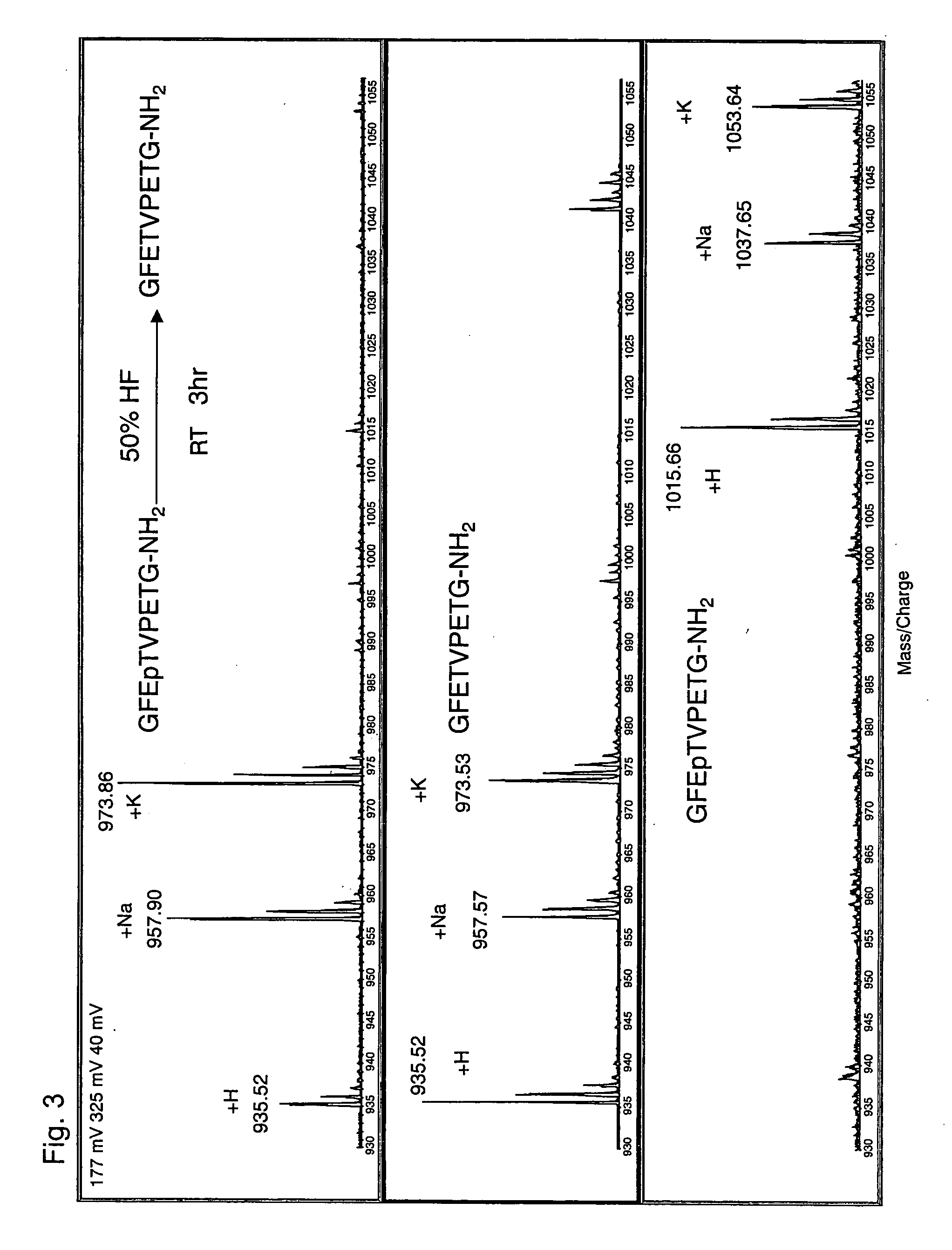Method of eliminating phosphate group of peptide and method of analyzing peptide
a phosphate group and peptide technology, applied in the field of protein chemistry and mass spectrometry of peptides/proteins, can solve problems such as incomplete dephosphorylation
- Summary
- Abstract
- Description
- Claims
- Application Information
AI Technical Summary
Benefits of technology
Problems solved by technology
Method used
Image
Examples
example 1
[0052] A phosphopeptide having the amino acid sequence of WAGGDApSGE (SEQ ID NO: 1) (Delta sleep-inducing peptide (DSIP) of Oryctolagus cuniculus (house rabbit), American Peptide Company Inc.) was used. This phosphopeptide is phosphorylated on a serine residue, and the phosphorylated serine residue is indicated by ‘pS.’
[0053] To 100 μg of the freeze-dried phosphopeptide of SEQ ID NO: 1, 50 μl of 50% hydrofluoric acid (aqueous solution) was added under ice-cold condition. The reaction was allowed to proceed at 0° C. for 3 hours. In a draft chamber, a stream of N2 gas was blown to the reaction mixture to evaporate the solvent and dry the reaction product. The resulting residue was dissolved in 100 μl water and was then subjected to MALDI-TOF MS (AXIMA-CFR, Shimadzu Corporation).
[0054]FIG. 1 shows a comparison of the resulting mass spectrum with other mass spectra, which confirms that dephosphorylation took place under the above-described conditions (50% HF, 0° C., 3 hrs) to give a pe...
example 2
[0056] A phosphopeptide having the amino acid sequence of TRDIpYETDYYRK (SEQ ID NO: 3) (Insulin receptor 1142-1153 of Homo sapiens (human), Sigma.) was used. This phosphopeptide is phosphorylated on a tyrosine residue at the fifth position from the N-terminus, and the phosphorylated tyrosine residue is indicated by ‘pY.’
[0057] To 100 μg of the freeze-dried phosphopeptide of SEQ ID NO: 2, 50 μl of 50% hydrofluoric acid (aqueous solution) was added under ice-cold condition. The reaction was allowed to proceed at 0° C. for 3 hours. In a draft chamber, a stream of N2 gas was blown to the reaction mixture to evaporate the solvent and dry the reaction product. The resulting residue was dissolved in 100 μl water and was then subjected to MALDI-TOF MS (AXIMA-CFR, Shimadzu Corporation).
[0058]FIG. 2 shows a comparison of the resulting mass spectrum with other mass spectra, which confirms that dephosphorylation took place under the above-described conditions (50% HF, 0° C., 3 hrs) to give a p...
example 3
[0060] A phosphopeptide having the amino acid sequence of GFEpTVPETG-NH2 (SEQ ID NO: 5) was synthesized. This phosphopeptide is phosphorylated on a threonine residue at the fourth position from the N-terminus, and the phosphorylated threonine residue is indicated by ‘pT.’ Further, this phosphopeptide is amidated on a glycine residue at the C-terminus, and the amidated glycine residue is indcated by ‘G-NH2.’
[0061] To 100 μg of the freeze-dried phosphopeptide of SEQ ID NO: 3, 50 μl of 50% hydrofluoric acid (aqueous solution) was added under ice-cold condition. The reaction was allowed to proceed at room temperature for 3 hours. In a draft chamber, a stream of N2 gas was blown to the reaction mixture to evaporate the solvent and dry the reaction product. The resulting residue was dissolved in 100 μl water and was then subjected to MALDI-TOF MS (AXIMA-CFR, Shimadzu Corporation).
[0062]FIG. 3 shows a comparison of the resulting mass spectrum with other mass spectra, which confirms that d...
PUM
| Property | Measurement | Unit |
|---|---|---|
| temperature | aaaaa | aaaaa |
| temperature | aaaaa | aaaaa |
| temperature | aaaaa | aaaaa |
Abstract
Description
Claims
Application Information
 Login to View More
Login to View More - R&D
- Intellectual Property
- Life Sciences
- Materials
- Tech Scout
- Unparalleled Data Quality
- Higher Quality Content
- 60% Fewer Hallucinations
Browse by: Latest US Patents, China's latest patents, Technical Efficacy Thesaurus, Application Domain, Technology Topic, Popular Technical Reports.
© 2025 PatSnap. All rights reserved.Legal|Privacy policy|Modern Slavery Act Transparency Statement|Sitemap|About US| Contact US: help@patsnap.com



